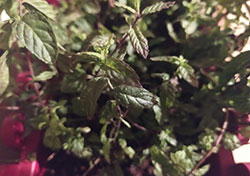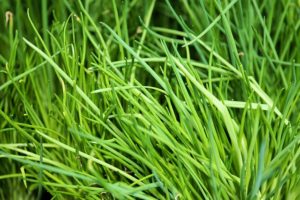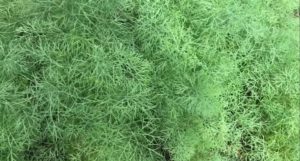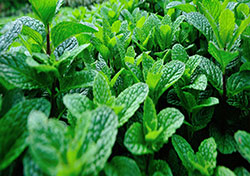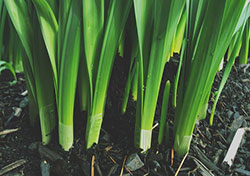Mint is one of the most widely used herbs all over the world because it can be used on both food and beverages. Due to its menthol and peppermint flavor that gives a lingering and cool feeling to the tongue, mint has been used as a flavoring to a huge variety of products such as food, drinks, candies, and even non food items like toothpaste, mouthwash, etc.
Given all these options that you can do with mint, it would really be extremely satisfying to harvest your own mint from your own garden. If you want to know what are the proper steps to do this without risking the entire condition of your mint plant, check out these essential information below.
Growing Conditions
Fast-growing, low maintenance, flavorful, and grows all year-round, there clearly is no reason for you not to grow mint. Another good thing about it is it comes in plenty of varieties so you can pick the kind that suits best to your planting resources. Now, how would you know what kind of growing conditions you have to build to successfully grow a healthy mint? Check out the list below.
- Weather Conditions
Depending on the variety that you are growing, mint can tolerate both hot and cool temperatures. Simply put, mint is highly adaptable. For instance, if you are growing peppermint, it is best that you grow during the cold weather; Spearmint, on the hand, thrives better in warm temperature. However, generally speaking, mint can tolerate temperatures between 55 and 70°F (13–21ºC).
- Sun Exposure
Generally, mint prefers partial to full sun exposure so better plant your mint in the sunny part of your garden. About 5 to 6 hours of sun exposure everyday should be adequate. If you prefer, you can still grow your mint indoors but make sure that you place it in areas where light can uninterruptedly pass through.
- Soil Requirements
Mint grows well in fertile, moist, and slightly acidic soil with pH 6.0 to 7.0. If you have a limited source for fertile soil, you can still work on a slightly poor soil by applying organic compost of fertilizer. It is also important to always keep the soil moist, otherwise your mint will find it quite hard to survive. To help you achieve this, you can cover the soil with a little amount of munch.
- Watering
If you are growing your mint in areas with full sun exposure, you must see to it that you keep the soil moist by watering it on a regular basis. Mint is generally a low maintenance plant; the only thing that it constantly needs is an adequate amount of water. Preferably, water your mint in the morning so the moisture can keep up until the heat of the afternoon sun hits.
- Spacing
If you have a relatively small garden, you might want to limit your mint plant to just 1 to 2 as it has a high tendency to spread to as far as 4 inches per month and roughly 2 feet within six months. With this, it is recommended to plant mint at least 2 feet apart.
Alternatively, if you want to hinder it from too much spreading, you may opt to grow mint in containers, whether indoors or outdoors.
- Companion Planting
There are lots of herbs, plants, and vegetables that grow well with mint. For instance, peas, cabbage and tomatoes will be more likely to improve their flavor if planted near mint. Additionally, mint is also beneficial to beets, kale, eggplant, bell pepper, broccoli, etc. as it is known as an effective and natural insect repellent.
Process Of Harvesting Mint
Depending on how many leaves you will need or for which event you will need them, you can harvest mint in smaller or larger amounts; this, however, does not affect the procedure of harvesting the plant. The only difference is that harvesting mint in large amounts may require you to use some sharp tools. Meanwhile, using your bare hands to harvest fewer mint leaves should be just fine.
- Using garden shears or just your fingertips, trim just about ⅓ of the total length of each stem.
- Alternatively, you can just simply pick the leaves off of the stem especially if you only need a few for your cooking.
- Don’t be afraid to cut as many as you want. Remember, mint is a vigorously growing plant and in no time you will see growing new branches again.
- You could also use this opportunity to shape your mint according to your preferences. Since mint is prone to growing aggressively, you can trim it accordingly to avoid it from spreading all over the place.
Storing And Using
Of course, it will always be best to use mint immediately after you have harvested it, but like any other herbs, you can still have the option to just store it for future use. Depending on how you intend to use mint, there are plenty of ways to store it and when properly done, can preserve its freshness and rich flavor.
- Keep the mint in a plastic bag
- Wash the mint thoroughly and then pat it dry using a clean paper towel.
- Slightly wet a ply of paper towel. Squeeze out any excess water.
- Loosely wrap the damp paper towel around a bundle of mint. This will keep the mint from drying when put inside the fridge.
- Put the bundled mint inside a slightly large ziplock bag, just enough not to crush the leaves. Seal the bag but be careful not to compress it too much, you will need a small amount of air circulating inside.
- Place the bag in the fridge, preferably in the crisper drawer. Be careful not to put anything on top of the mint to avoid it from being crushed.
- Doing this method will keep your mint fresh for about a week. Throw it out if you notice its leaves turn brown or slimy.
- When you’re ready to use the mint, do not forget to wash it with cold water without damaging the delicate leaves.
B. Freeze the mint
- In freezing mint, it is best to not wash it all as excess water can freeze it improperly. But, if you insist, make sure to pat it dry completely.
- Lay them flat on a baking tray or any available casserole pan. Make sure that separate stems and leave do not touch each other to avoid them from sticking together when frozen.
- Place the tray in the freezer for about 2 to 3 hours.
- Once the mint have completely frozen, take them out from the baking tray and transfer them in a plastic container.
- Squeeze the air out of the plastic bag by slightly pressing down on the bag or using a vacuum sealer.
- What’s good about freezing mint is that you do not have to defrost it upon using. As a matter of fact, your dish will definitely taste better if you use frozen mint.
C. Turn the mint into ice cubes
- Compared to the two other ways of freezing mint, this method will require you to chop off the mint into smaller pieces.
- Washing mint beforehand does not actually make much of a difference if you are going to use this method, so you can leave that option behind if you prefer.
- Evenly distribute the chopped mint and fill all the compartments of the ice cube tray.
- Fill each cube with just an adequate amount of water to avoid it from spilling.
- Set the ice cube tray in the freezer and let it mold into a solid ice cube mint.
- Avoid placing anything on top of the tray to avoid possible contamination. If you have an ice cube tray cover, better to use it.
- Your ice cube mint should last for about 6 months. Do not use the mint if you notice any discoloration.
- If you will be using mint for your beverage, you can simply toss the ice cubes directly into your drink. However, if you intend to use it for cooking, let the ice melt first before using.
D. Keep the mint in water
- Trim about an inch from the button end of the stem. This will allow your mint to thrive when submerged into the water.
- Fill a small jar or glass container with just an inch of water.
- Put the mint in the jar. Make sure that the cut part is touching the water.
- Loosely cover the mint with a plastic bag, but be careful not to damage the leaves. You can use a rubber band to secure the plastic in the jar.
- Keep the jar inside the fridge.
- Every 2 to 3 days, change the water without having to take the mint out of the jar.
- When you’re ready to use the mint, trim and rinse it first and then pat it dry.
- This method will keep your mint fresh for about two weeks.


